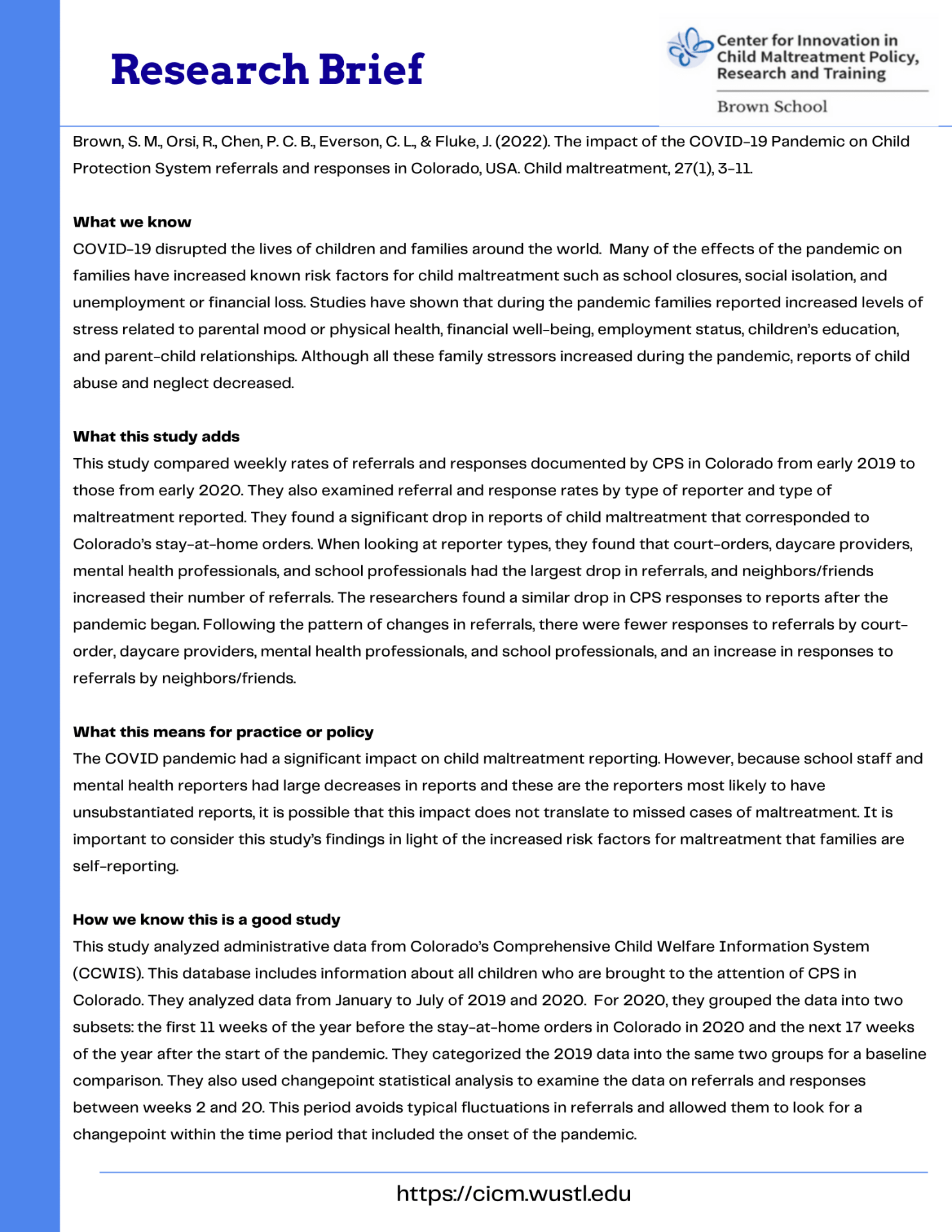The Impact of the COVID-19 Pandemic on Child Protection System Referrals and Responses in Colorado, USA
Research Brief

Brown, S. M., Orsi, R., Chen, P. C. B., Everson, C. L., & Fluke, J. (2022). The impact of the COVID-19 Pandemic on Child Protection System referrals and responses in Colorado, USA. Child maltreatment, 27(1), 3-11.
What we know
COVID-19 has disrupted the lives of children and families around the world. Many of the effects of the pandemic on families have increased known risk factors for child maltreatment such as school closures, social isolation, and unemployment or financial loss. Studies have shown that during the pandemic families reported increased levels of stress related to parental mood or physical health, financial well-being, employment status, children’s education, and parent-child relationships. Although all these family stressors increased during the pandemic, reports of child abuse and neglect decreased.
What this study adds
This study compared weekly rates of referrals and responses documented by CPS in Colorado from early 2019 to those from early 2020. They also examined referral and response rates by type of reporter and type of maltreatment reported. They found a significant drop in reports of child maltreatment that corresponded to Colorado’s stay-at-home orders. When looking at reporter types, they found that court orders, daycare providers, mental health professionals, and school professionals had the largest drop in referrals, and neighbors/friends increased their number of referrals. The researchers found a similar drop in CPS responses to reports after the pandemic began. Following the pattern of changes in referrals, there were fewer responses to referrals by court order, daycare providers, mental health professionals, and school professionals, and an increase in responses to referrals by neighbors/friends.
What this means for practice or policy
This study showed the pandemic had a significant impact on child maltreatment reporting. However, because school and mental health reporters had large decreases in reports and these are the reporters most likely to have unsubstantiated reports, it is possible that this impact does not translate to missed cases of maltreatment. It is important to consider this study’s findings in light of the increased risk factors for maltreatment families are self-reporting.
How we know this is a good study
This study analyzed administrative data from Colorado’s Comprehensive Child Welfare Information System (CCWIS). This database includes information about all children that are brought to the attention of CPS in Colorado. They analyzed data from January to July of 2019 and 2020. For 2020, they grouped the data into two subsets, the first 11 weeks of the year before the stay-at-home orders in Colorado in 2020 and the next 17 weeks of the year after the start of the pandemic. They group the 2019 data into the same two groups for a baseline comparison. They also used changepoint statistical analysis to examine the data on referrals and responses between weeks 2 and 20. This period avoids typical fluctuations in referrals and allowed them to look for a changepoint within the time period that included the onset of the pandemic.